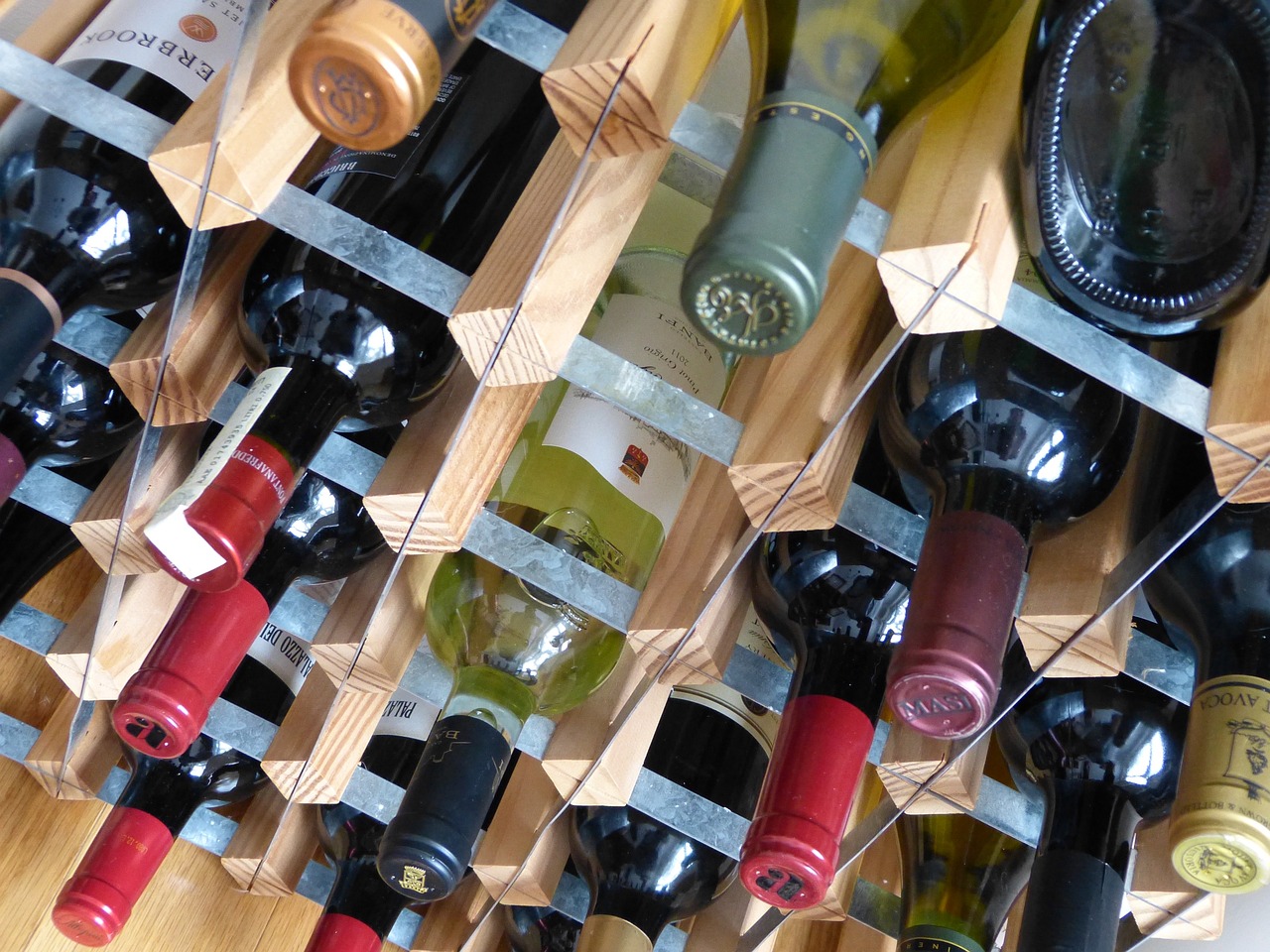
How to Store Wine Properly: A Look into Wine Cabinet Features
Storing wine correctly is essential to preserving its quality and flavor. Whether you’re an avid collector or a casual drinker, proper wine storage ensures that every bottle in your collection matures beautifully and delivers the intended experience. One of the best ways to store wine is by using a dedicated wine cabinet, which provides the ideal conditions for long-term storage.
In this article, we will delve into the key features of wine cabinets, why they matter for proper wine storage, and how to choose the right one for your needs. By the end of this guide, you will have a clearer understanding of how to protect your wine investment and enhance your wine-drinking experience.
Why Proper Wine Storage Matters
Wine is a delicate product that evolves over time, and how you store it has a significant impact on its aging process. The right conditions allow wine to mature gracefully, developing complex flavors, aromas, and textures. Improper storage, on the other hand, can cause premature aging, spoilage, and the loss of the wine’s original characteristics.
Here are a few key reasons why proper wine storage is important:
- Preservation of Flavor: Storing wine at the right temperature ensures that the wine’s natural flavors remain intact over time.
- Prevention of Oxidation: Corks need to remain moist to prevent air from seeping into the bottle and oxidizing the wine, which can lead to spoilage.
- Aging Potential: Some wines are meant to be aged, and storing them in optimal conditions allows the wine to reach its full potential in terms of flavor and aroma.
A wine cabinet provides the perfect environment for storing wine by regulating factors such as temperature, humidity, and light exposure, all of which can affect wine quality.
Essential Wine Storage Conditions
Before exploring the features of wine cabinets, it’s important to understand the conditions that are necessary for proper wine storage:
1. Temperature Control
Maintaining a consistent temperature is the most critical factor in wine storage. Wine should be stored between 45-65°F (7-18°C), with 55°F (13°C) being the ideal average for most wines. Temperature fluctuations can cause the wine to expand and contract, which can lead to oxidation or spoilage.
2. Humidity Levels
Humidity is important to keep the corks moist, preventing them from drying out and shrinking. A dry cork can allow oxygen to enter the bottle, causing the wine to oxidize and lose its flavor. Ideally, wine should be stored at humidity levels between 50% and 70%.
3. Light Exposure
UV light can degrade the organic compounds in wine, which affects the flavor and aroma. Wine bottles, especially those in clear or light-colored glass, should be stored in a dark environment, away from direct sunlight.
4. Vibration Control
Vibrations can disturb the wine’s sediment and accelerate chemical reactions within the liquid, which can negatively impact its aging process. Minimizing vibrations is crucial for wines that are being aged.
5. Air Quality
Wines should be stored in an odor-free environment. Strong odors from nearby substances, such as cleaning products or food, can permeate the cork and taint the wine’s flavor.
Now that we understand the conditions needed for proper wine storage, let’s take a closer look at the features of wine cabinets that help achieve these conditions.
Key Features of a Wine Cabinet
Wine cabinets are specifically designed to provide optimal storage conditions. When choosing a wine cabinet, it’s essential to understand the various features that contribute to maintaining the ideal environment for your wine collection.
1. Temperature Zones
Wine cabinets come with either single or dual temperature zones, each designed to accommodate different storage needs.
Single Zone Cabinets: These maintain a consistent temperature throughout the cabinet, making them ideal for collectors who primarily store one type of wine (e.g., red or white). If you’re focusing on aging wines, a single zone cabinet is a great option since all your wines will be stored at the same temperature.
Dual Zone Cabinets: These cabinets feature two separate temperature zones, allowing you to store different types of wine at their optimal temperatures. For example, you can store white wines at a cooler temperature (around 45-50°F) and red wines at a slightly warmer temperature (around 55-60°F) in the same cabinet. This is a convenient solution for collectors with a diverse wine collection.
Tip: If you primarily drink one type of wine, a single-zone cabinet may suffice. However, if you enjoy both red and white wines, a dual-zone cabinet offers greater flexibility.
2. Humidity Control
As mentioned earlier, humidity is critical in keeping corks moist and preventing oxidation. Many high-quality wine cabinets come with built-in humidity control systems that help maintain the appropriate levels between 50% and 70%. Some cabinets use water trays, while others incorporate advanced technology to manage humidity automatically.
When selecting a wine cabinet, ensure it has a humidity management feature to protect your wine collection, especially if you plan to store bottles for long periods.
3. UV-Resistant Glass Doors
Wine is sensitive to light, particularly UV rays, which can damage the compounds in the wine and degrade its quality. Wine cabinets with glass doors should be UV-resistant to protect the wine from harmful light exposure. If you prefer the aesthetic of a glass door wine cabinet, look for models with tinted or UV-protected glass to shield your collection.
Opaque doors, such as those made of wood or metal, offer natural light protection and are another excellent option if light exposure is a primary concern.
4. Vibration Reduction
To preserve the integrity of your wine, it’s important to minimize vibrations that could disturb the sediment in the bottles. Some wine cabinets feature anti-vibration technology or dampening systems that reduce the impact of movement, ensuring a stable environment for your wine. This is particularly important for wines that are being aged for several years.
Choose a wine cabinet with solid construction, as high-quality materials and insulation contribute to vibration reduction. Additionally, avoid placing the wine cabinet near appliances that produce frequent vibrations, such as refrigerators or washing machines.
5. Shelving and Storage Capacity
The type of shelving in a wine cabinet can significantly impact how efficiently you store your bottles. Wine cabinets typically offer one of the following shelving options:
Sliding Shelves: These allow easy access to individual bottles and can be adjusted to accommodate different bottle sizes. Sliding shelves are ideal if you frequently access your collection and want better organization.
Fixed Shelves: These are more stable and secure but offer less flexibility in terms of bottle size. Fixed shelves are well-suited for larger collections where easy access isn’t as crucial.
Adjustable Shelves: Adjustable shelves give you the flexibility to rearrange the interior of the cabinet to fit various bottle shapes and sizes, such as larger champagne bottles or unusual wine bottle designs.
When considering storage capacity, keep in mind that the advertised bottle capacity is often based on standard-sized wine bottles (typically Bordeaux bottles). If you collect a variety of bottle shapes and sizes, you may need to adjust your expectations of the actual capacity.
6. Lock and Security Features
If you have a valuable wine collection or are storing wine in a home with children, security features like locks are important. Many wine cabinets come with built-in locking mechanisms that ensure your wine is safe from unauthorized access.
7. Energy Efficiency
Wine cabinets run continuously to maintain the appropriate temperature and humidity levels, so energy efficiency is a key consideration. Look for wine cabinets with energy-efficient compressors and insulation to minimize power consumption. Some models come with energy ratings that make it easier to compare their power usage.
Energy-efficient wine cabinets are not only better for the environment but can also save you money in the long run on electricity costs.
8. Design and Aesthetic Appeal
Since wine cabinets are often placed in dining rooms, living rooms, or kitchens, their appearance is an important consideration. Wine cabinets come in a variety of styles, including traditional wooden designs, modern stainless steel finishes, and sleek glass-fronted models.
- Wood Cabinets: Offer a warm, traditional look and often feature rich finishes like oak or cherry.
- Metal or Glass Cabinets: Provide a sleek, contemporary aesthetic that pairs well with modern interiors.
Choose a design that complements your home décor and personal style while offering the functionality you need.
Placement Considerations for Your Wine Cabinet
Where you place your wine cabinet can impact its effectiveness. Here are a few placement tips to ensure your cabinet functions optimally:
- Avoid Direct Sunlight: Place the cabinet in a cool, dark area away from direct sunlight and heat sources.
- Ventilation: Ensure proper ventilation around the cabinet, especially if it’s a freestanding unit. Built-in cabinets should have adequate airflow to prevent overheating.
- Level Surface: Place the cabinet on a stable, level surface to prevent any tilting or vibrations that could affect the wine’s sediment.
Budgeting for a Wine Cabinet
Wine cabinets vary widely in price depending on the size, features, and materials used. Here’s a general price range:
- Entry-Level Models: $200 - $500 for smaller or single-zone units.
- Mid-Range Models: $500 - $1,500 for larger cabinets with dual-zone features, better insulation, and adjustable shelving.
- High-End Models: $2,000+ for luxury wine cabinets with custom design features, top-of-the-line technology, and high storage capacity.
The more advanced the features (such as dual zones, vibration reduction, or custom materials), the higher the price. Consider your storage needs and available space when setting a budget.
Conclusion
Choosing the right wine cabinet with the right features is essential for ensuring your wine is stored properly, whether you're building a long-term collection or simply want to keep a few bottles ready for special occasions. By understanding the key features of wine cabinets—temperature control, humidity management, UV protection, vibration reduction, and more—you can make an informed decision and protect your wine investment.
Remember, a wine cabinet is more than just storage—it’s a tool that preserves the quality, taste, and value of your wine over time.
